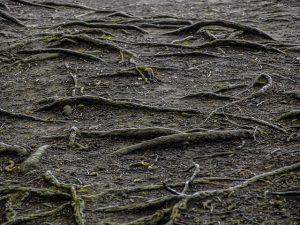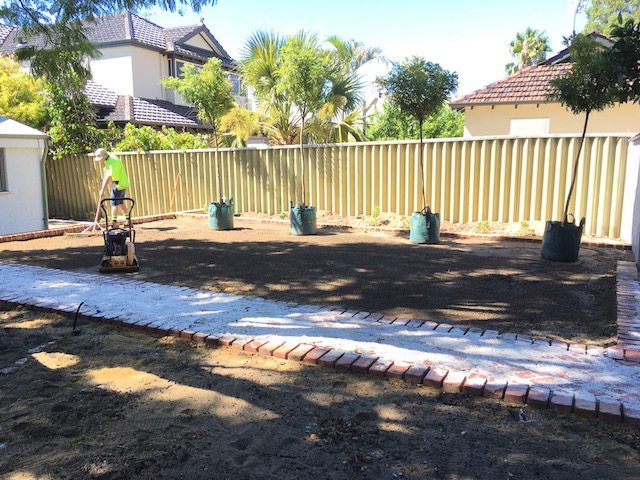Why would this be so important when it comes to planning and selecting plants for your landscape design? Because selecting landscape trees can’t be from a purely aesthetic standpoint. Trees have many pros, but also some cons which would be considered.
Of course, you should choose one you will love and which suits the design, but you also need to understand the long-term effects and nature of the tree – they can have a large impact on many areas of your design and garden.
Choosing Trees for Landscaping
Consult the often-asked questions about landscape trees questions below and our list of possible hazards before making your selection…
1. What is the size of your garden area, and how much space are you willing to have the tree occupy?
A large tree offers shade, can be used as a focal point for your design, keeps the garden & house cool in summer, provides entertainment for the kids and creates healthy air for you to enjoy in your garden. But consider how large it can grow before planting; if it grows too much and you aren’t prepared, removing it can be an expensive and problematic procedure, and a huge loss to the environment.

2. Function or Feature?
Are you looking to use trees for a functional purpose such as; screening from neighbours or street, shade and protection from the elements, to attract birdlife into your garden, for fruit, etc. Or maybe as a feature in your garden design, like a focal point, maybe for its colour or shape, for its fragrance, or to create a break or private area in your space.
3. Do you use your garden year-round?
All nature follows a cycle, and not taking that into account can create havoc with your design. For example, deciduous trees provide fabulous shade in summer, but lose all their leaves and are bare in winter. This can be great for letting in and making the most of the winter light, but if you used them as a screen within your design, suddenly you are exposed for months to prying eyes and lose your privacy. Not to mention dealing with a lot of leaves clean-up come autumn! Evergreens on the other hand shed lightly throughout the year and stay green during winter – but you can lose a lot of light because of that reason.
However, both have many great features which can be used to your advantage if carefully chosen and planned from the beginning.
Possible Hazards From Poor Selection and Placement of Landscape Trees
1. Problems from falling leaves/flowers/fruits
If the wrong tree is put in proximity to gutters, entertaining areas, or features like pools or waterfalls, then in autumn you could be facing fun problems like blocked drains, pools to clean, and guests wading through soggy, rotting leaves. Many trees look stunning but aren’t great in garden designs for people who want a clean, low-maintenance yard. Avoid trees like Jacarandas, Eucalyptus or trees with pine needles and cones.
Trees like Marri and Jarrah attract noisy cockatoos who will also shred and eat the tree quite happily, causing mess, damage and commotion. Often it is a matter of placement, so you can include a stunning Jacaranda tree in your design – just think carefully before you plant it!

2. Damage from root systems
Some trees have strong and wide-spread root systems that can affect pools, paving, roads, drains, and underground systems. We’ve all seen that friend’s backyard where their prized tree has broken and cracked the paving, damaged their reticulation, or lifted up a wall – and just with its roots! Trees from the Ficus and Tipuana families, and many of the large Eucalyptus can cause problems with their root systems.
If you plant on your verge or are in the middle of developing, and more than one-third of the root system gets damaged by road-works or construction, it might not be able to recover and then you are left dealing with a potential hazard.
3. Proximity to neighbours
Overhanging trees can cause damage to fences and boundaries or, worst-case scenario, cause disputes between you and your neighbour that develop into a legal and financial problem. This can be avoided by regular pruning, careful planning and tree selection.
Is it Necessary to Prune Landscape Trees?
It’s a common mistake to assume that trees ‘need’ pruning. Apart from commercial fruit trees, they really don’t. Unless it is a safety issue of potential falling branches, impact on property or due to damage, you can leave your tree to grow as large as it wants – and it will be happier and healthier that way!
How Can a Landscape Designer Help you Choose Trees for Landscaping?
A good designer should have extensive plant knowledge and, if you live in Perth, know all about our native trees and what works best in the Western Australian climate.
A designer will be able to assess your garden and know which landscape trees will give you the result you are looking for, while making sure your design is as safe and carefully planned as possible to prevent problems in the long-run.
They can also look at your existing trees and if and how you can incorporate them into your design. An experienced and creative landscape designer should be able to work a tree into your design – removing a healthy and fully-grown tree should be a last resort!
Remember; landscape tree selection is for the long-term, you are planning for the future. It is too common nowadays to simply remove perfectly good trees to make way for planting new ones that might seem to be the better option for a design. In Perth there are very few trees over 100 years-old – imagine if yours was the next to last that long!
Don’t let something as small as a poorly-chosen tree get in the way of your dream garden design – give us a call and our expert landscapers will help you out.

